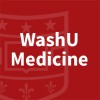
Inhaled and Intravenous Milrinone in Patients With Severe Pulmonary Hypertension
Pulmonary Hypertension Due to Left Heart DiseaseThe investigator compared difference between inhaled and intravenous milirinone in patiens with severe pulmonary hypertension undergoing cardiac surgery

Exparel vs. Marcaine ESP Block for Post-cardiac Surgical Pain
PainPostoperative3 moreThe goal of this pilot study is to describe and compare Ultrasound-Guided Erector Spinae Plane (ESP) Blocks using Exparel® (bupivacaine liposome injectable suspension) to Marcaine® (bupivacaine hydrochloride) for pain management and outcomes after cardiac surgeries.

Creative Music Therapy in Newborns With Congenital Heart Disease
Congenital Heart DiseaseMother Child InteractionIn the context of a clinical trial, the investigators will evaluate if parent-infant interaction can be improved by a family integrated, individualised, interactive resource- and needs-oriented music therapy approach in the dyads of infants with congenital heart disease and their parents. This intervention will be compared with the standard of care. Infants allocated to the control group will receive standard care during admission. Standard care includes involvement of a multi-professional team consisting of medical and nursing team, psychologists/psychiatrists, social workers, breastfeeding counsellor, speech therapist, nutritional counsellor and physiotherapists.

Study on Optimal Temperature During Cardiopulmonary Bypass (THERMIC-4)
Ischemic Heart DiseaseValvular Heart Disease2 moreIn order to perform heart surgery, a machine called cardiopulmonary bypass (CPB), or more commonly known as a heart-lung machine, is used to maintain the circulation of oxygenated blood needed by the rest of the body and its organs. Historically, when a patient is connected to CPB, their body is cooled below the normal body temperature. This is known as hypothermia. This is because scientific studies have previously shown that reduced body temperature lowers metabolism and therefore offers more protection to the brain and other organs due to the reduced oxygen requirement. The evidence supporting this practice, however, has been challenged throughout the history of cardiac surgery, with studies supporting that normothermia, or normal body temperature, is a safe alternative. Despite this, the practice of hypothermia has persisted. Published data from a survey of 139 cardiac surgeons in the United Kingdom showed that 84% still routinely employ hypothermic CPB during surgery. To assess whether normothermic or hypothermic CPB is safer, a clinical trial requiring a large sample size and high recruitment rates will be required. Therefore, the investigators aim to assess firstly the feasibility of trial recruitment and allocation adherence in this study. 100 adults across 10 different cardiac surgery centres in the United Kingdom will be recruited to a multicentre feasibility randomised controlled trial comparing normothermia (active comparator) against hypothermia (control comparator) during cardiopulmonary bypass in cardiac surgery. This study will also test the ability of the Cardiothoracic Interdisciplinary Research Network (CIRN), a trainee-led research collaborative, to collect pilot data on Major Adverse Cardiac and Cerebrovascular Events (MACCE) using a regulation-approved electronic application HealthBitⓇ. Participants will also be asked to complete quality of life surveys. The results of this study will subsequently inform a large, adequately powered randomised controlled trial for optimal temperature management during CPB.

Annuloplasty Rings and Band Post-Market Clinical Follow-Up Study
Mitral RegurgitationTricuspid Regurgitation1 moreARB-PMCF is a multicenter, observational study of the safety and performance of Abbott annuloplasty devices used in surgical repair of mitral and tricuspid valve regurgitation. The devices included in this study are the SJM™ Rigid Saddle Ring and SJM Séguin Annuloplasty Ring, indicated for mitral valve repair, and the SJM Tailor™ Annuloplasty Ring and SJM Tailor Annuloplasty Band, indicated for mitral or tricuspid repair. Participants will be enrolled prior to undergoing mitral or tricuspid valve repair surgery including an Abbott annuloplasty implant and will complete annual follow-up visits through five years from implant. The study is being conducted to meet post-market clinical follow-up requirements of the European Union Medical Device Directives.

A Validation Study of Nitroglycerin Induced Acute Drop of Pd/Pa (NTG-Pd/Pa) in Clinical Practice...
Hypotension SymptomaticIschemic Heart DiseaseHyperemia with adenosine was an elemental process in FFR examination. Adenosine injection will induce some discomfort, and increase cost expenditure. Nitroglycerine will induce an acute drop of Pd/Pa, and this lowest Pd/Pa was determined as NTG-Pd/Pa. NTG-Pd/Pa has a linear relationship with FFR value and has a good diagnostic accuracy to predict FFR≤0.80 in our recent study. There is only one prospective study report on the relationship between NTG-Pd/Pa and FFR. In this study, we aim to evaluate the safety of NTG-Pd/Pa, the repeatability and dose-response of this novel index. Furthermore, we will investigate the diagnostic accuracy of NTG-Pd/Pa, with FFR≤0.8 and Resting full-cycle ratio≤0.89 as ischemic threshold respectively.

Cardiac Markers in Depressed Patients With Coronary Heart Disease - R01HL147862
Coronary Heart DiseaseDepressionDepression doubles the risk of death in patients with coronary heart disease (CHD), but so far, there is insufficient evidence that we can reduce the risk of death by treating depression. This study will investigate the cardiac risk markers that are associated with depression symptoms that remain despite treatment, and identify potential targets for their treatment. The results of the study will inform the development of more effective interventions to improve both depression and survival in patients with CHD.

Comparison of Participants Who Received a CanGaroo® Envelope, TYRX™ Envelope, or no Envelope During...
Cardiac DiseaseThe objective of this study is to gather information on participants returning at time of CIED change-out or revision who underwent a device implantation with either a CanGaroo® envelope, TYRX™ envelope, or no envelope.

Risk Underlying Rural Areas Longitudinal Cohort Study (RURAL) Heart and Lung Study
Rural HealthPulmonary Disease1 moreThe University of Texas Health Science Center at San Antonio (UTHSCSA) will serve as the site for the RURAL Study Coordinating Center, led by PI Vasan Ramachandran, MD. The primary function of the Study Coordinating Center (SCC) is to serve as an administrative liaison between all of the RURAL study's cores. The SCC schedules, facilitates, and hosts, all RURAL meetings including preparation for Observational Study Monitoring Board (OSMB) meetings, and maintains direct communication with the study's program officers at NHLBI. The SCC monitors the overall progress of RURAL and keeps all RURAL cores abreast of study updates through meetings, emails, newsletters. It also maintains the official RURAL website and serves as an administrator for investigators seeking to collaborate with RURAL through the submission of Ancillary Studies. The SCC will have no direct interaction with any participants, nor will it have access to identifiable data.

Cooperative Assessment of Late Effects for SCD Curative Therapies
Sickle Cell DiseasePulmonary Disease2 moreSickle Cell Disease is one of the most common genetic diseases in the United States, occurring in approximately 1 in 400 births. Approximately 100,000 individuals are diagnosed with SCD in the United States. Mortality for children with SCD has decreased substantially over the past 4 decades, with >99% of those born in high resource settings, including the United States, France, and England, now surviving to 18 years of age. However, the life expectancy of adults with SCD is severely shortened. Dysfunction of the heart, lung, and kidney is directly associated with decreased life expectancy. With the variety of curative therapies that are now available for SCD, long-term health outcomes studies are time-sensitive. As of now, efforts to determine long-term health outcomes following curative therapies for SCD have been limited. Though curative therapies initially should provide a cure for symptoms of SCD, there is the risk of late health outcomes to consider. Defining health outcomes following curative therapy is essential to improve personalized decision-making when considering curative versus disease-modifying therapeutic options. The primary goal of this study is to determine whether curative therapies for individuals with SCD will result in improved or worsening heart, lung, and kidney damage when compared to individuals with SCD receiving standard therapy. The investigators will also explore whether certain genes are associated with a good or bad outcome after curative therapy for SCD.
